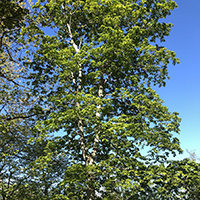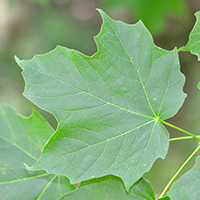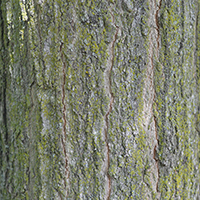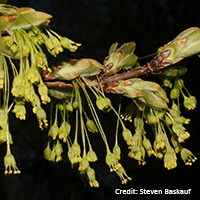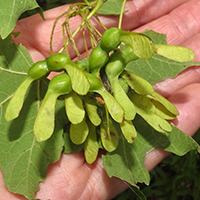What black maple looks like
Size and shape
- Reaches 35 metres high.
- Trunk reaches up to 90 centimetres in diameter.
Leaves
- Dark green on top and yellowish green below.
- Have 3 lobes whereas sugar maple has 5.
- Has hairy leaf stalks.
Bark
- Dark grey and smooth.
- Develops thin, vertical ridges with age.
Flowers
- 5 greenish-yellow leaf-like sepals.
- Grow on stalks 18 to 50 millimetres long.
- Bloom in May.
Fruit
- Winged keys contain 2 seeds.
- Wings are parallel to each other or point slightly outward.
Where black maple is found
Black maple is found in Southern Ontario in the Great Lakes region, extending east into Quebec.
What you need to know to grow black maple
- Moisture: grows best in moist, well drained soils, but also does well in soils too dry for sugar maple.
- Soil: grows best in loamy soils.
- Shade: grows best in full sun or light shade, but is shade tolerant, especially when young.
- Caution:
- black maple trees are susceptible to leaf scorch, which can kill the leaves if the tree does not have enough water. Young trees are more likely to be affected by leaf scorch, but proper watering can help them recover.
Benefits and uses of black maple
Wildlife benefits
Black maple trees provide food for insects and animals, including:
- moths
- bees
- beavers
- moose
Many mammals and birds also use black maple trees for shelter, nesting sites and roosts. Birds also feed on larvae found in bark crevices.
Commercial uses
Black maple wood is heavy, hard and strong, and has been used for:
- furniture
- toys
- cabinetry
- flooring
- plywood
- cutting blocks
Fun facts about black maple
- Black maple trees can live to 200 years.
- Black maple trees can hybridize with sugar maples.
Updated: October 10, 2023
Published: October 10, 2023
